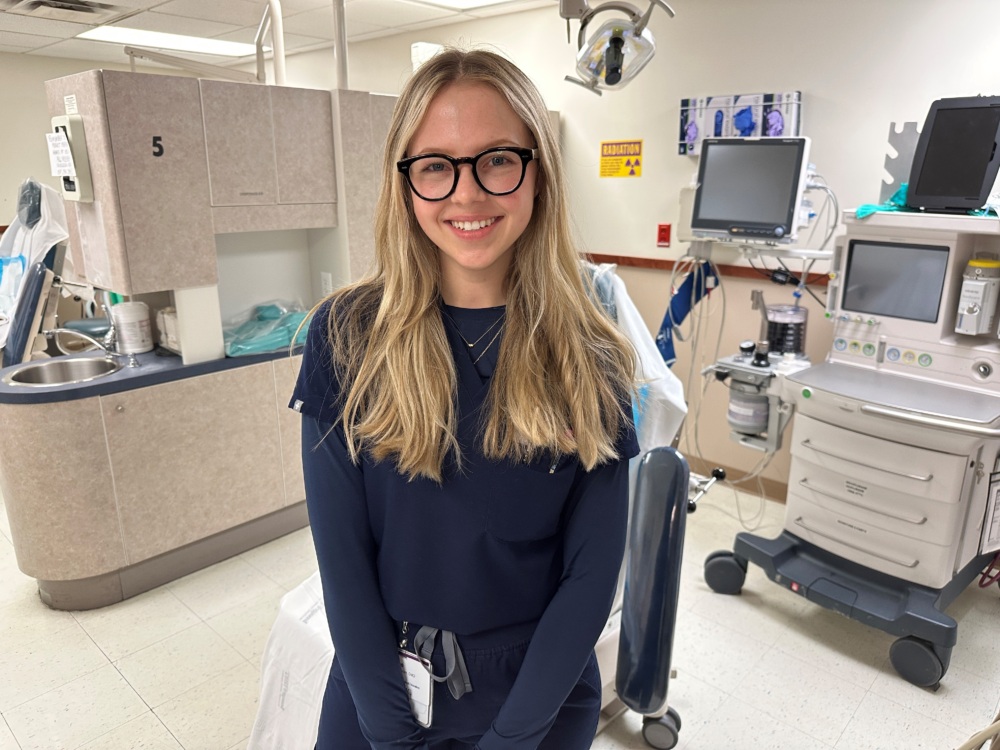Ask the dentist: Your oral cancer questions, answered

Did you know that you can receive an cancer de la bouche screening on your regular trip to the dentist? Routine checks like this are key to detecting some oral precancers and cancers early for better health outcomes.
Dr. Zoe Stenholm, a dentist at the University of Pittsburgh School of Dental Medicine, spoke with the Prevent Cancer Foundation to answer your top oral cancer-related questions.
Note: This interview has been edited for length and clarity.
What takes place during an oral cancer screening?
An oral cancer screening is going to look on the outside and the inside. We’re going to start by looking at your face and your neck region. Then we’ll go inside your mouth and look at all the structures inside and your throat.
What symptoms are you looking for during an oral cancer screening?
Some of the things that we look for in an oral cancer screening are any enlarged or hardened lymph nodes. We want to feel if these lymph nodes move around or not and that’ll give us more information.
On the inside [of the mouth] we’re looking for any lumps and bumps. That could be red patches, any lesions in general that aren’t healing or anything that looks different than what’s normal.
What are the leading risk factors for oral cancer?
When we’re looking at oral cancer, there are risk factors that can affect the exterior and interior of your mouth. On the exterior, one risk factor is sun exposure and whether you’ve been exposed to sunlight for long periods of time.
On the interior, there are a couple of risk factors to be aware of. Using tobacco, either chewing or smoking, is going to increase your risk of oral cancer*, as will alcohol use and infection with the papillomavirus humain (HPV). Other things that may contribute are older age and having a weakened immune system.
How long does an oral cancer screening usually take?
Your oral cancer screening is going to take just a few minutes to perform [during your routine cleaning visit]. It might take a bit longer if you have certain risk factors, or if there is a significant finding, but usually it should last around three minutes.
How do results come back so fast?
We’re able to get results back relatively quickly because we’re basing our results off palpation, or feeling and seeing right then and there.
For anything we’re unable able to identify in that moment, we can refer you for a biopsy or other follow-up treatment that may be needed.
Is oral cancer hereditary?
Oral cancer can be genetic, meaning if you have a family history of oral cancer, you could be at a higher risk of developing the disease. However, most cases of oral cancer are not genetic, so it’s important for everyone to get their routine oral cancer screening.
How do you request an oral cancer screening?
Typically, you don’t have to request an oral cancer screening, as it’s usually done at your six-month cleaning appointment. It might be done so quickly or not mentioned, so that you don’t even notice. However, you can always confirm with your dentist and ask to receive an oral cancer exam during your visit.
LIRE AUSSI | Is hookah worse than cigarettes?
What is the biggest misconception surrounding oral cancer?
A big misconception would be that you need to have one of these risk factors—such as chewing or smoking tobacco or drinking alcohol in excess—to have oral cancer, which isn’t true. Even young, healthy patients can be diagnosed with oral cancer. That’s important and [it is] the reason why everyone needs to get screened.